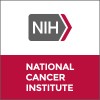
Tosedostat in Combination With Cytarabine or Decitabine in Treating Patients With Newly Diagnosed...
Acute Myeloid Leukemia With Multilineage DysplasiaAdult Acute Myeloid Leukemia With 11q23 (MLL) Abnormalities7 moreThis study examines a new oral chemotherapy drug called tosedostat, in combination with cytarabine or decitabine. Tosedostat is thought to work by decreasing the availability of amino acids (building blocks the cell needs to make proteins) in cells. It has been shown in early studies to have activity against a variety of cancers, including leukemias. Patients with acute myeloid leukemia (AML) or high-risk myelodysplastic syndrome (MDS) with specific genetic mutations have a poorer response to chemotherapy and a higher risk of relapse after treatment. Researchers are looking to see if combinations of chemotherapy drugs may improve outcomes for patients that do not respond as well with the current chemotherapy regimens, without increasing the risks of treatment.

Study to Evaluate Pharmacokinetics, Food Effect, Safety and Efficacy of Oral Azacitidine
Myelodysplastic SyndromesLeukemia5 moreThe primary purpose of this study is to evaluate the pharmacokinetics of oral azacitidine when administered once daily as two 150-mg tablets, including the effect of food, and to evaluate the bioavailability of oral azacitidine 300-mg when administered as two 150-mg tablets relative to three 100-mg tablets.

Vorinostat, Cytarabine, and Etoposide in Treating Patients With Relapsed and/or Refractory Acute...
Accelerated Phase Chronic Myelogenous LeukemiaAdult Acute Basophilic Leukemia34 moreThis phase I trial is studying the side effects and best dose of vorinostat when given together with cytarabine and etoposide in treating patients with relapsed or refractory acute leukemia or myelodysplastic syndromes or myeloproliferative disorders. Vorinostat may stop the growth of cancer cells by blocking some of the enzymes needed for cell growth. Drugs used in chemotherapy, such as cytarabine and etoposide, work in different ways to stop the growth of cancer cells, either by killing the cells or by stopping them from dividing. Giving vorinostat together with cytarabine and etoposide may kill more cancer cells.

Combination Chemotherapy in Treating Young Patients With Down Syndrome and Acute Myeloid Leukemia...
Childhood Acute Basophilic LeukemiaChildhood Acute Eosinophilic Leukemia13 moreThis phase III trial is studying how well combination chemotherapy works in treating young patients with Down syndrome and acute myeloid leukemia or myelodysplastic syndromes. Drugs used in chemotherapy work in different ways to stop the growth of cancer cells, either by killing the cells or by stopping them from dividing. Giving more than one drug (combination chemotherapy) may kill more cancer cells.

A Phase I Study of MGCD0103 Given Three-Times Weekly In Patients With Leukemia Or Myelodysplastic...
LeukemiaMyelodysplastic SyndromesIn this study, MGCD0103, a new anticancer drug under investigation, is given three times weekly to patients with leukemia or myelodysplastic syndromes.

A Phase I/II Study of MGCD0103 With Azacitidine in Patients With High-Risk Myelodysplastic Syndrome...
Myelodysplastic SyndromeAcute Myelogenous LeukemiaIn this study, MGCD0103, a new anticancer drug under investigation, is given three times weekly in combination with azacitidine to patients with high-risk myelodysplastic syndromes or acute myelogenous leukemia.

Etanercept in Treating Young Patients With Idiopathic Pneumonia Syndrome After Undergoing a Donor...
Accelerated Phase Chronic Myelogenous LeukemiaBlastic Phase Chronic Myelogenous Leukemia23 moreThis phase II trial is studying how well etanercept works in treating young patients with idiopathic pneumonia syndrome after undergoing a donor stem cell transplant. Etanercept may be effective in treating patients with idiopathic pneumonia syndrome after undergoing a donor stem cell transplant.

Laboratory-Treated Donor Bone Marrow in Treating Patients Who Are Undergoing a Donor Bone Marrow...
Graft Versus Host DiseaseLeukemia4 moreRATIONALE: Giving chemotherapy and total-body irradiation before a donor bone marrow transplant or peripheral blood stem cell transplant helps stop the growth of cancer and abnormal cells and helps stop the patient's immune system from rejecting the donor's stem cells. When certain stem cells from a donor are infused into the patient they may help the patient's bone marrow make stem cells, red blood cells, white blood cells, and platelets. Sometimes the transplanted cells from a donor can make an immune response against the body's normal cells. Removing the T cells from the donor cells before transplant may stop this from happening. PURPOSE: This randomized phase III trial is studying donor bone marrow that is treated in the laboratory using two different devices to compare how well they work in treating patients who are undergoing a donor bone marrow transplant for hematologic cancer.

Cytomegalovirus (CMV) Vaccine in Donors and Recipients Undergoing Allogeneic Hematopoietic Cell...
Acute Lymphoblastic LeukemiaChronic Myelogenous Leukemia4 moreThe purpose of this trial is to evaluate a CMV vaccine given to related donor/recipient pairs (donors prior to peripheral blood stem cell donation and CMV-seropositive recipients just before and after transplantation) and CMV-seropositive recipient-only subjects (related or unrelated) to determine incidence rates of CMV infection, disease, and other complications from immunosuppression and/or transplantation. The outcomes for the groups receiving CMV vaccine will be compared to the outcomes for the group that received the placebo vaccine to see if there is a clinical benefit. For this trial, donors and recipients must have matched HLA genotype (matched at 5/6 or 6/6 HLA loci).

Low-Dose Fludarabine, Busulfan, and Anti-Thymocyte Globulin Followed By Donor Umbilical Cord Blood...
LeukemiaLymphoma2 moreRATIONALE: Giving chemotherapy before a donor umbilical cord blood transplant helps stop both the growth of cancer cells and the patient's immune system from rejecting the donor's stem cells. When the healthy stem cells from a donor are infused into the patient, they may help the patient's bone marrow make stem cells, red blood cells, white blood cells, and platelets. Sometimes the transplanted cells from a donor can make an immune response against the body's normal cells. Giving chemotherapy, such as fludarabine and busulfan, and antithymocyte globulin before transplant and tacrolimus and mycophenolate mofetil after transplant may stop this from happening. PURPOSE: This clinical trial is studying how well giving low-dose fludarabine and busulfan together with anti-thymocyte globulin, followed by donor umbilical cord blood transplant works in treating patients with advanced hematologic cancer.
